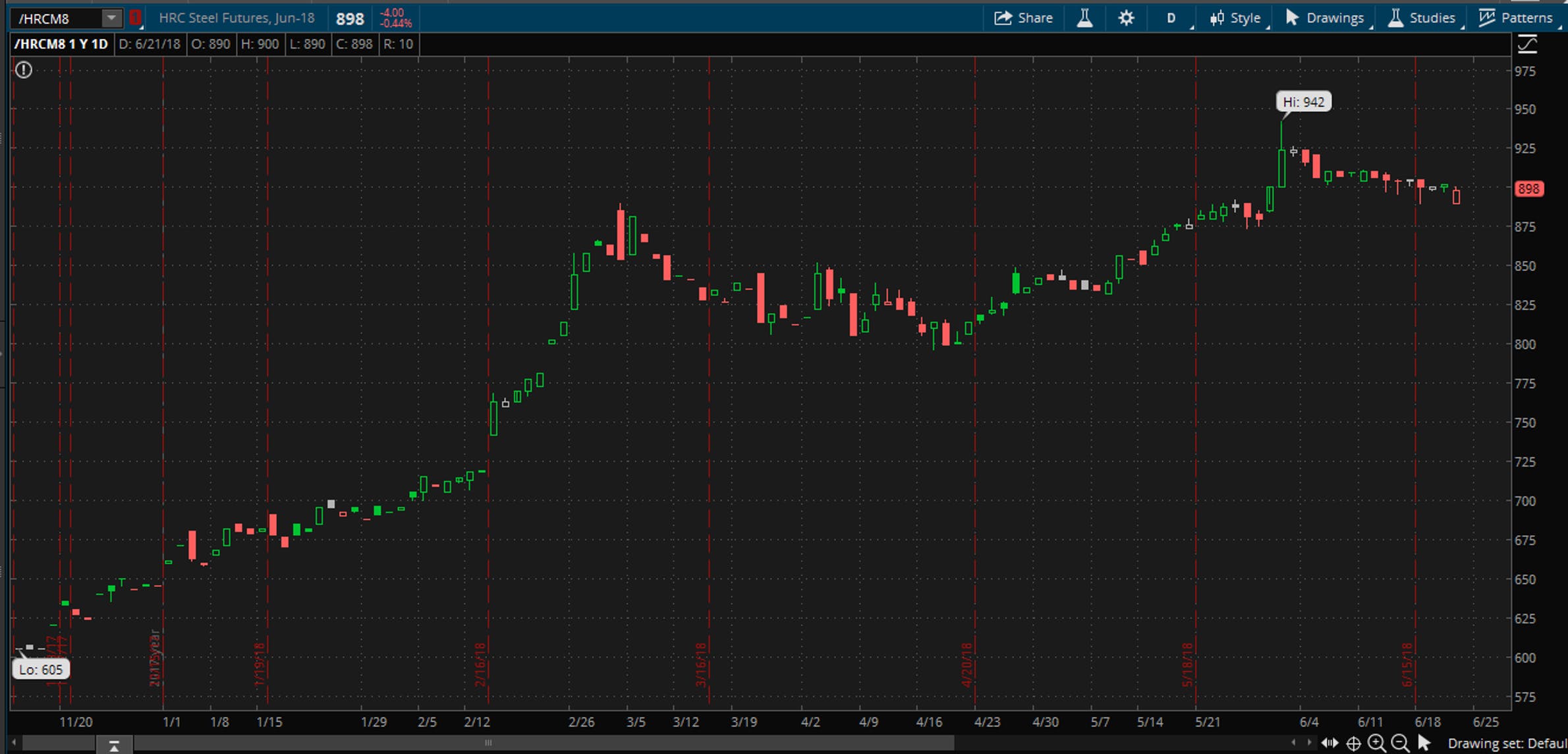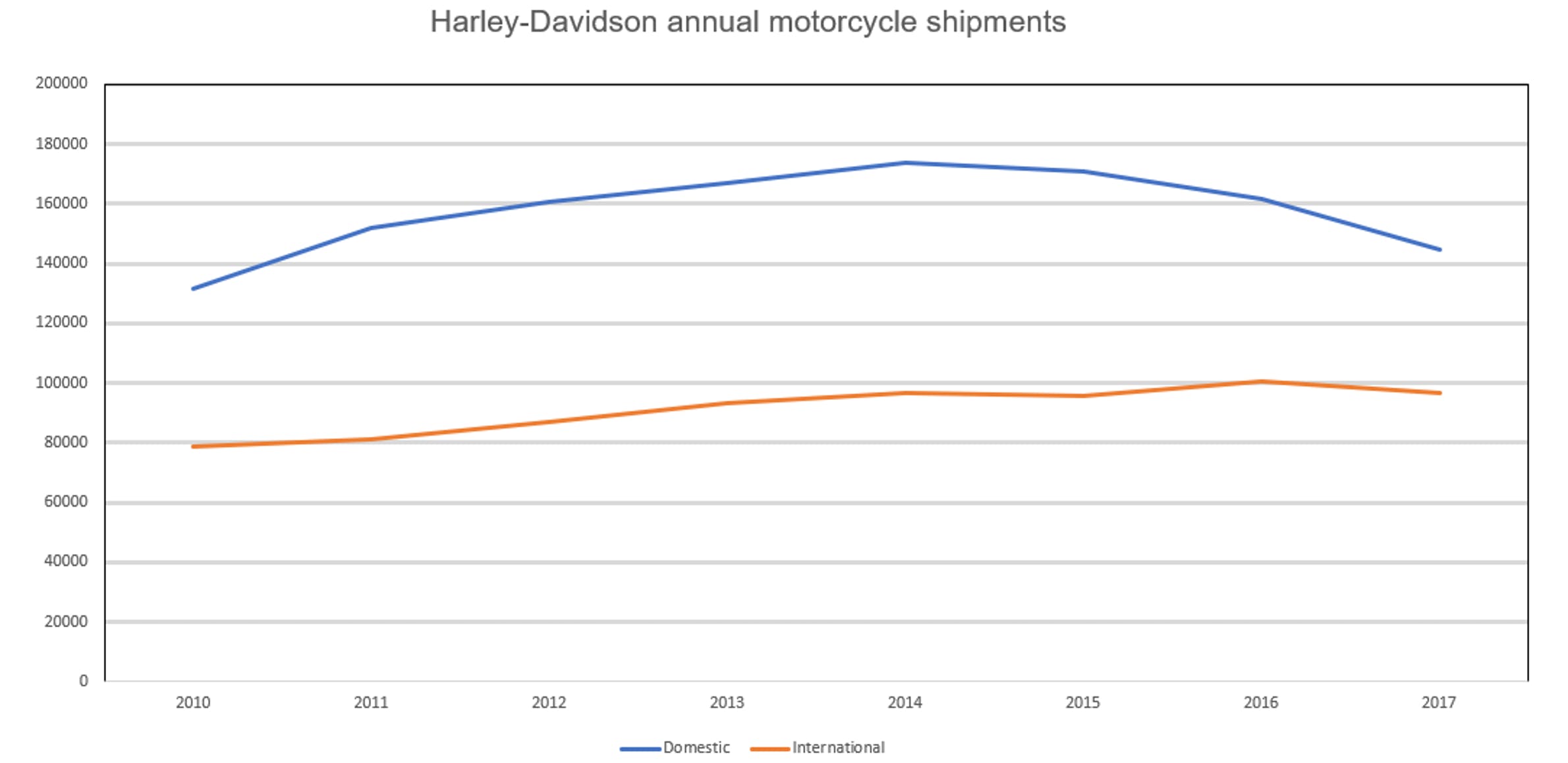As if Harley-Davidson doesn’t have enough problems — both external and of their own making — the company is now on the receiving end of a Twitter barrage from President Donald Trump. The Harley-Trump story is an excellent example of what a mess the current trade-war rhetoric has caused and how the president reacts when things don’t go the way he wants. I’m sure there are other examples, but the motorcycle industry happens to be the one I know.
Early in his term, Trump met with Harley-Davidson executives for a photo op in front of the White House. The president praised the company, while also showing, unsurprisingly, that he has no depth of knowledge of the U.S. motorcycle industry in general or Harley-Davidson’s struggles in particular. Let’s face it. Trump is more of a limousine guy than a Low Rider guy.
Harley-Davidson faces critical problems. Its “core customers,” basically Baby Boomer white males, are aging out of the market. Major efforts to reach out to women and minorities have had some success, but not enough to offset the loss of the traditional Harley buyers. Young people with debt prefer less expensive motorcycles and many are put off by what they perceive as the Harley culture. So far, every time Harley-Davidson has tried to produce a new product (from the V-Rod to the Street 750 and 500) to reach out to younger, non-core buyers, the faithful grumble that it’s not a “real Harley” and the hoped-for new buyers shrug and shop elsewhere.
One of Harley-Davidson’s key strategies is to increase sales outside the United States to 50 percent of total sales by 2027. That strategy is being hurt by Trump’s propensity to pick fights with trading partners.
When Trump raised tariffs on European steel and aluminum, it hit Harley-Davidson twice. Steel prices rose, and not just for imported steel. The chart below shows the price for Midwest steel futures.

Then last week the European Union slapped a 25 percent tariff on motorcycles over 500 cc from the United States. Europe accounted for nearly 20 percent of Harley’s sales last year, so the threat is significant. The company has been making progress toward its goal of 50 percent of sales abroad, as shown in the chart below, but the tariffs are a big and costly headwind.

On Monday, Harley-Davidson officially responded to the European tariffs by doing exactly what you would expect a major international corporation to do. They announced they’d move production abroad so they could avoid the European tariffs. That shouldn’t surprise anyone. Harley-Davidson already has plants in Brazil, Thailand and India to produce motorcycles sold in international markets. Bikes destined for Europe don’t have to be assembled in the United States.
While I say it shouldn’t be a surprise for Harley-Davidson to shift production, it appeared to take President Trump by surprise and earned one of his now famous flurries of angry, threatening tweets.
Surprised that Harley-Davidson, of all companies, would be the first to wave the White Flag. I fought hard for them and ultimately they will not pay tariffs selling into the E.U., which has hurt us badly on trade, down $151 Billion. Taxes just a Harley excuse – be patient! #MAGA
— Donald J. Trump (@realDonaldTrump) June 25, 2018
Again, Trump showed his superficial understanding of the facts by suggesting Harley-Davidson was planning to build motorcycles abroad and ship them back to the United States. H-D motorcycles sold in the United States are assembled here. The ones built abroad are sold abroad, usually to get around tariffs.
….When I had Harley-Davidson officials over to the White House, I chided them about tariffs in other countries, like India, being too high. Companies are now coming back to America. Harley must know that they won’t be able to sell back into U.S. without paying a big tax!
— Donald J. Trump (@realDonaldTrump) June 26, 2018
Trump went on (this is not a complete list of his tweets today on the topic), continuing to threaten and to show his ignorance of the fact that Harley-Davidsons have been built abroad for years.
A Harley-Davidson should never be built in another country-never! Their employees and customers are already very angry at them. If they move, watch, it will be the beginning of the end – they surrendered, they quit! The Aura will be gone and they will be taxed like never before!
— Donald J. Trump (@realDonaldTrump) June 26, 2018
So this is where we are. Trump’s policies were supposed to be about jobs. Harley-Davidson is closing its Kansas City plant and expanding its York, Pennsylvania plant for a net loss of a few hundred jobs. It’s moving production abroad, taking a hit from higher steel prices and says the total cost of the tariff mess to the company will be about $90 million to $100 million a year.
And by the way, Harley-Davidson took the money from the Trump tax cut earlier and used it to buy back stock, not create new jobs. So that didn’t work as planned, either.
On that cold winter day early in his term, Trump embraced the Harley-Davidson executives, but now he has turned against them because they haven’t played the role he wanted. So much winning, for everyone.
